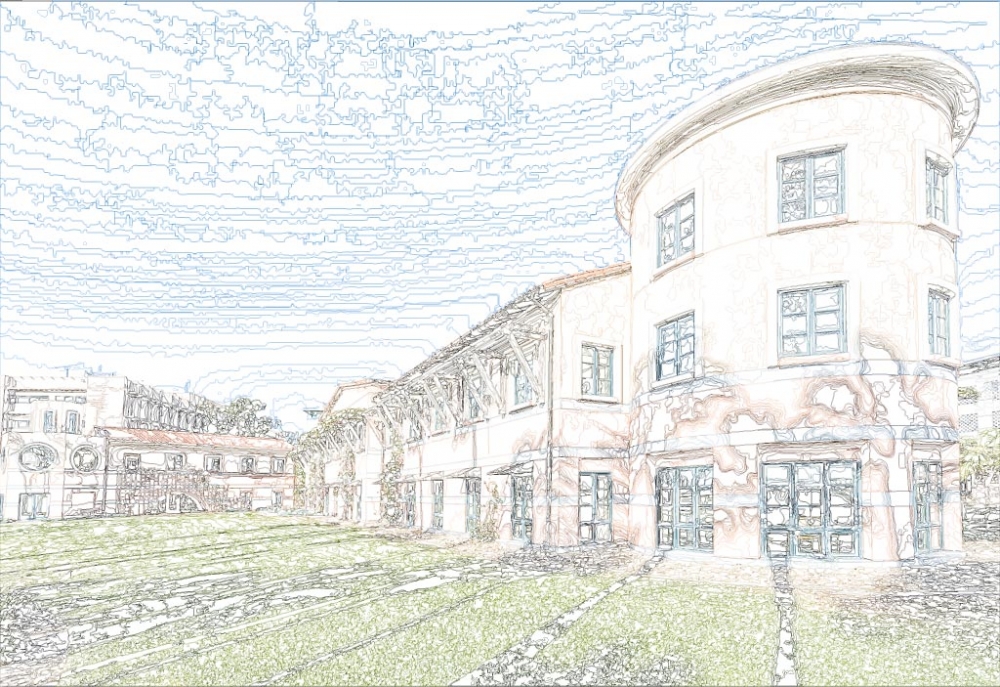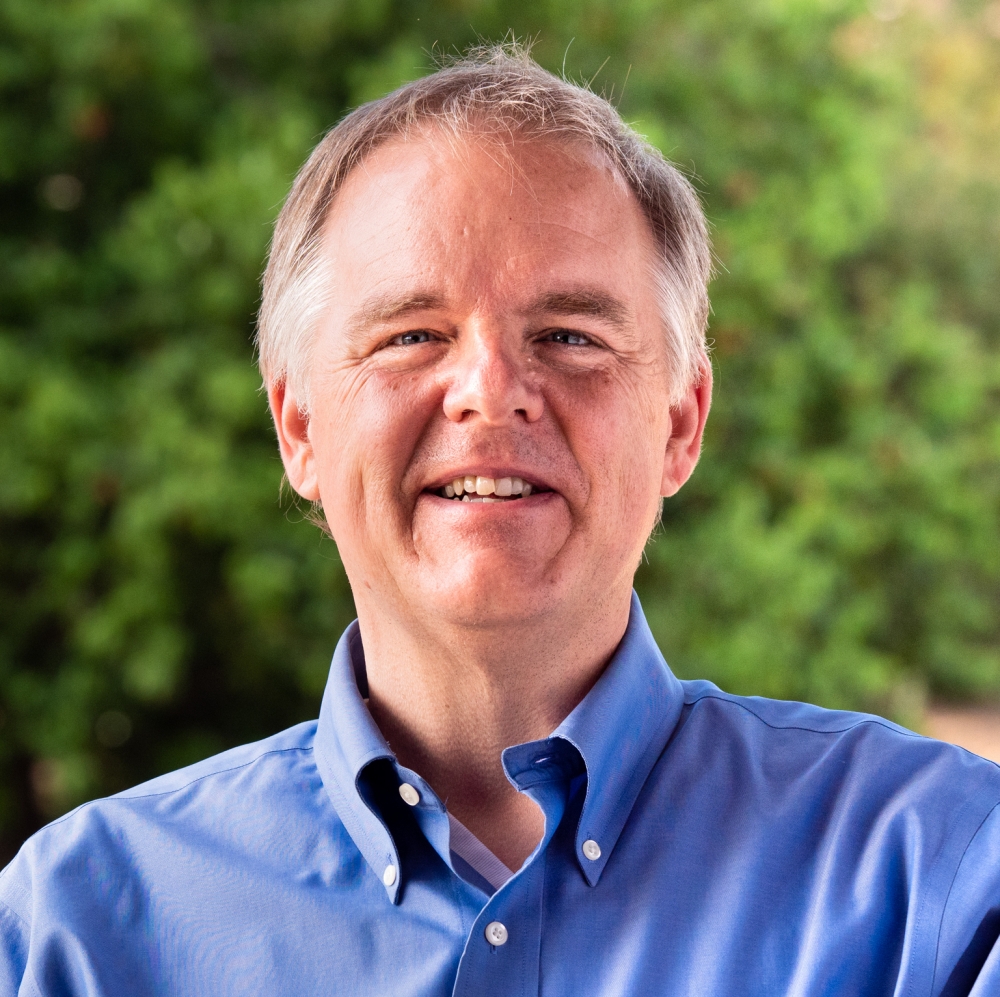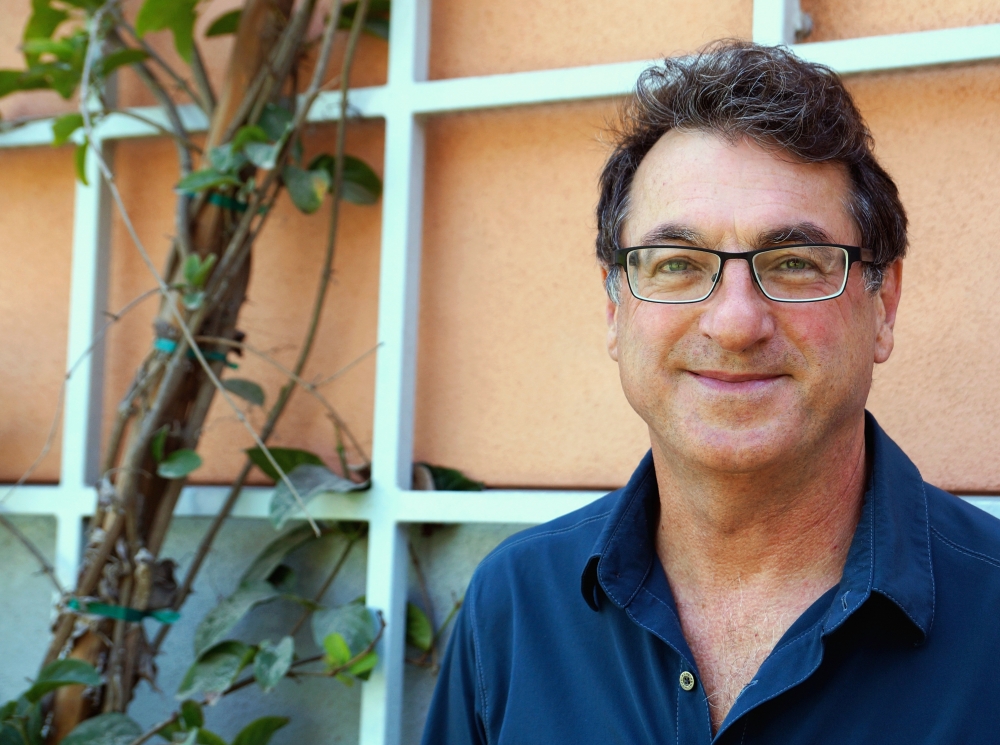
Coming Together, Virtually

While the entire university has been disrupted by the pandemic, the Kavli institute for Theoretical Physics (KITP) has faced a unique challenge. KITP’s mission has always been to bring together leading scientists from around the world for in-person collaboration in the auditoriums and corridors of Kohn Hall.
But for the past half year the building has remained empty, as COVID-19 has made these personal interactions impossible. That said, KITP’s schedule is as busy as ever, with perhaps more scientists taking advantage of its activities than at any point in the past.
“We’ve definitely lived through the evolution of the pandemic in different countries, different attitudes about what’s possible and what’s not, as well as when things will change,” said Director Lars Bildsten. “And obviously it looks much different now than it did seven months ago.”
Kohn Hall also experienced a 10,000-gallon flood just a week before the state closed for the pandemic. “So it is a bit of a chaotic time, in general, for the institute,” he added.
Initial response
By fortunate coincidence, the 8-10 week programs were ending right around when lockdown began. That meant the KITP could simply tell the next programs’ attendees not to come.
The institute also was able to accommodate researchers who couldn’t leave Santa Barbara since it operates the Charles T. Munger Physics Residence, the facility where most scientists stay when they visit. As Bildsten pointed out, “no one was coming to take the rooms.”

Mark Bowick
As it happened, Deputy Director Mark Bowick was a coordinator for KITP’s next program on the physics of active matter. This proved a real boon for the institute, as he could work closely with his fellow coordinators — Mike Cates (Cambridge), Nikta Fakhri (MIT), Cristina Marchetti (UC Santa Barbara), and Sriram Ramaswamy (Indian Institute of Science) — to devise creative solutions and troubleshoot emerging issues straight away.
They quickly realized that remote attendance offered a number of upsides. Not limited by physical space anymore, they could expand the invite list to 170 people — everyone who had applied to the program and more.
Program leaders worked hard to foster the sort of exchanges and questions online that happen when people are actually together in the room. One key innovation, led by participant Yair Shokef of Tel Aviv University, was a spin hour, where people were randomly split into breakout rooms with three participants. “This was meant to simulate a random discussion in the corridor or meeting someone at lunch,” Bowick said.
They also introduced a Slack workspace for the program, which helped foster conversation amongst the scientists. By and large, people were very happy with the program experience, Bowick said. It far exceeded their expectations of what was possible given the circumstances.
Keeping busy
Bowick’s deep involvement in the active matter program meant that KITP had someone in-house familiar with emerging innovations. This helped when he, Bildsten and Program Manager David Kaczorowski approached the organizers of upcoming programs about how to proceed.
“It’s hard,” Bildsten said. “You’re trying to convince future program coordinators to do something that that they were not at all planning to do.”
The decisions vary. Two of the year’s five remaining programs decided to cancel. For both, the planners felt that the in-person aspect was crucial to the experience, particularly since they were trying to bring together researchers in disparate fields. But for those that chose to go forward remotely, they reported that it was better than they thought it could be.
KITP staff Alina Gutierrez and Craig Kunimoto delivered these intensive Zoom events for hundreds of participants while also recording them for KITP Online Talks, the institute’s archival resource of past talks.
The canceled events opened up KITP’s schedule in August and October. The institute’s leadership decided to contact coordinators of past programs about the possibility of returning for two-day reunion conferences. The idea was a smashing success, and KITP ended up hosting six reunion events this summer in which over 1,000 scientists participated from 45 different countries.
For October, they reached out to the institute’s postdocs for proposals for short conferences. The result was six more two-day conferences. Not only were these successful events, but they proved excellent opportunities for the young researchers to learn how to plan a conference, all while guided by KITP’s senior leadership.
[[{"fid":"17865","view_mode":"default","fields":{"format":"default","alignment":"left","field_file_image_alt_text[und][0][value]":false,"field_file_image_title_text[und][0][value]":false,"field_caption[und][0][value]":"%3Cp%3EDavid%20Kaczorowski%3C%2Fp%3E%0A","field_caption[und][0][format]":"filtered_html","field_credit[und][0][value]":"","field_download_image[und][0][value]":""},"type":"media","field_deltas":{"1":{"format":"default","alignment":"left","field_file_image_alt_text[und][0][value]":false,"field_file_image_title_text[und][0][value]":false,"field_caption[und][0][value]":"%3Cp%3EDavid%20Kaczorowski%3C%2Fp%3E%0A","field_caption[und][0][format]":"filtered_html","field_credit[und][0][value]":"","field_download_image[und][0][value]":""}},"attributes":{"class":"media-element file-default media-wysiwyg-align-left","data-delta":"1"}}]]
KITP has a well-oiled system for creating balanced conferences, said Bildsten, who has overseen the institute for 8 years. And there is a world of difference between attending a good conference and creating a good conference.
“Overall, the best decision was to limit the conferences to two days, and to just the morning,” said David Kaczorowski. “It made it a fun, rewarding experience where people could focus very intently on a narrow topic without getting fatigued, instead of doing these long, Grateful Dead-style sets.”
Building on what works
KITP has adapted and innovated throughout the pandemic, and the team has found some unexpected upsides. They plan to leverage these advantages in the future once the institute can return to in-person events.
For instance, short, virtual conferences may become more common in KITP’s lineup. As both Bildsten and Kaczorowski noted, the reunion conferences would never have occurred were it not for the pandemic, and they proved to be really rewarding.
The leadership also hopes to expand participation in their normal programs via remote attendance, which they believe is achievable without detracting from the in-person experience. Future programs may offer applicants the option to apply to attend remotely. This should make the institute’s events more accessible, as the team has seen over the past months. This development is also welcomed by the National Science Foundation, KITP’s primary funder.
The institute has taken advantage of the remote activity and renovations made necessary by the flood to upgrade Kohn Hall’s audiovisual systems and complete deferred maintenance. The building is typically only empty for two weeks a year, which makes updates and repairs difficult to schedule.
Kohn Hall will feature improved cameras and microphones, and the lecture halls will now have systems designed to link hearing aids to the rooms’ audio systems. The team has tried to maintain the building’s striking visual presence created by famous architect Michael Graves, such as spending hours matching slight variations of salmon pink paints. That said, it will look slightly different once it reopens.
Some at KITP wondered how the rising popularity of video conferencing would affect the institute. However, over the past several months it has become abundantly clear how much people value the in-person experience the KITP offers.
What’s been heartwarming, Bildsten said, is that coordinators and attendees are lamenting that they cannot physically come together. They also lament not seeing KITP’s welcoming and able staff, who make their in-person visits so productive.
“The in-person experience isn’t going to be replaced anytime in the near-term by going online,” Kaczorowski said. “But at the same time, we can still provide a really great collaborative experience online for those who can’t be here.”



